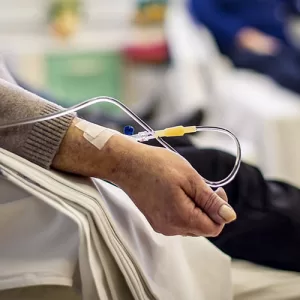Managing Chemotherapy Side Effects: Practical Tips for Patients
As you embark on your chemotherapy journey, you may feel overwhelmed by the potential side effects. While these treatments are crucial for fighting cancer, they can take a toll on your body and well-being. Understanding and managing side effects is essential for maintaining your quality of life during this challenging time. This article provides practical cancer care tips and strategies to help you navigate common chemotherapy side effects. By implementing these evidence-based approaches, you can minimize discomfort and focus on your recovery. Remember, you are not alone in this process, and with the right tools and support, you can effectively manage side effects and optimize your treatment outcomes.
Managing Chemotherapy Side Effects
Chemotherapy can cause various chemo side effects due to its impact on fast-growing healthy cells. Common side effects include fatigue, nausea, hair loss, and increased infection risk. Understanding these effects is crucial for effective cancer care. While challenging, many side effects are manageable with proper strategies and support from your healthcare team. Communicating openly about your experiences can help tailor your treatment plan and improve your overall quality of life during chemotherapy.
Common Side Effects of Chemotherapy Treatment
Chemotherapy can cause various chemo side effects, impacting your daily life. You may experience fatigue, nausea, hair loss, and increased infection risk. Cancer care tips include getting plenty of rest, using anti-nausea medications, and practicing good hygiene. Remember, side effects vary from person to person, and many are temporary. Always communicate with your healthcare team about any concerns.
When Side Effects Occur During Chemotherapy
Chemo side effects typically peak 24-48 hours after treatment. According to MD Anderson, most resolve within days to weeks after completing therapy. It’s crucial to communicate with your care team about any symptoms. They can provide cancer care tips and adjust treatment if needed. Remember, managing side effects effectively improves your quality of life during treatment.
Managing Nausea and Vomiting During Chemotherapy
Nausea and vomiting are common chemo side effects that can significantly impact your quality of life. To manage these symptoms, try eating small, frequent meals of bland foods and staying hydrated. Antiemetic medications can be highly effective when taken as prescribed. Relaxation techniques and acupressure may also provide relief. Communicate openly with your healthcare team about your symptoms to ensure optimal cancer care tips and support.
Coping with Fatigue and “Chemo Brain”
Managing chemo side effects like fatigue and cognitive impairment (“chemo brain”) is crucial for your well-being. Take regular rest breaks and prioritize tasks when your energy is highest. Stay hydrated and maintain proper nutrition to support your body. Engaging in moderate exercise, like walking, can help combat fatigue. For “chemo brain,” try memory aids and discuss potential treatments with your healthcare team. These cancer care tips can significantly improve your quality of life during treatment.
Dealing with Hair Loss During Chemotherapy
Hair loss is one of the most visible chemo side effects. To manage this challenging aspect of cancer care, consider cutting your hair short before treatment begins. Be gentle with your scalp, using mild shampoos and soft brushes. Explore head coverings like wigs, scarves, or hats for comfort and confidence. Remember, hair typically regrows within months after treatment ends.
Mouth, Skin and Nail Changes During Chemotherapy
Chemotherapy can cause various chemo side effects affecting your mouth, skin, and nails. You may experience dry, itchy skin, rashes, or nail discoloration. To manage these issues, use gentle cleansers, moisturize regularly, and protect your skin from sun exposure. For oral care, maintain good hygiene and use alcohol-free mouthwash. These cancer care tips can help alleviate discomfort and prevent complications during treatment.
Managing Other Side Effects of Chemotherapy
Managing chemo side effects requires a comprehensive approach. Fatigue can be addressed through short rest breaks and staying hydrated. For nausea, take prescribed medications and eat small, frequent meals. Hair loss can be mitigated by using soft brushes and considering cold cap devices. Implement these cancer care tips to improve your quality of life during treatment.
FAQs on Chemo Side Effects
Common Concerns
Chemo side effects vary widely among patients. Fatigue, nausea, and hair loss are frequent issues. Many wonder about infection risk due to lowered immunity. It’s crucial to discuss all symptoms with your care team.
Managing Discomfort
Practical cancer care tips include staying hydrated, taking prescribed anti-nausea medications, and maintaining good hygiene to prevent infections. Balancing rest and light activity can help combat fatigue. Always consult your doctor before trying new remedies.
Conclusion
As you navigate the challenges of chemotherapy, remember that managing side effects is a crucial part of your treatment journey. By implementing the practical tips discussed in this article, you can take proactive steps to alleviate discomfort and maintain your quality of life. Communicate openly with your healthcare team, stay informed about your treatment, and don’t hesitate to seek support when needed. With proper management and a positive mindset, you can face chemotherapy side effects with confidence and resilience. Your strength and determination, combined with these strategies, will help you through this difficult time and bring you closer to your ultimate goal of recovery and renewed health.
Disclaimer: The content for this article is for informational purposes only and is not a substitute for professional medical advice, diagnosis, or treatment. Always consult your oncologist with any questions regarding a medical condition. Do not disregard medical advice or delay seeking it based on information from this site.

